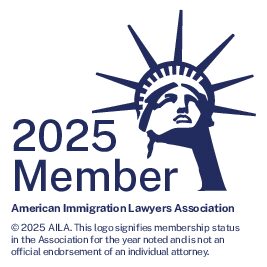WELKOM – BIENVENUE – 歓迎 – Добро пожаловать – Υποδοχή – Willkommen – 환영 – BENVENUTO
Visas and Status, Generally
Time is an elemental concept of the U.S. immigration system. For foreign visitors, the two words most often preceding an immigration question are “how long. . . ?” This is a pertinent inquiry, as a visa and one’s visa ‘status’ in the United States, although distinct in form, are alike in one important respect: both can expire at any given time based on complex rules intended to govern the foreigner’s actions within the country. Conversely, one may expire while the other remains valid. This layered permission aspect of U.S. immigration can and often does cause confusion and problems.
If you are a foreigner physically present in the United States, it is important to distinguish your status from your visa. The visa in your passport is much like a ticket, or a license, which, if granted (usually by a U.S. consulate or embassy abroad) merely allows you to apply for admission at a U.S. port-of-entry, under assumed qualifications based on your expressed intent in applying for the visa. A visa allows this application at the port-of-entry, but does not guarantee your lawful presence in the United States after entry. Your ability to maintain lawful presence in the United States under a particular visa category (B-2, J-1, H-1B, etc.) is governed after entry by rules related to your actual ‘status.’
If you are in the U.S. temporarily, such as a temporary worker, student, or visitor for business or pleasure, you possess non-immigrant status. If you are in the U.S. with the intent of eventually obtaining permanent residence, you possess immigrant status. Status, as such, is the initial focal point for legal analysis related to any foreigner’s current immigration circumstances and goals moving forward.
Status is like a clock that begins ticking upon your physical entry and inspection at the port-of-entry, whether a major airport, cruise ship terminal or land border checkpoint. The duration of lawful status you currently possess is indicated with an expiration date on your I-94 Arrival/Departure Record, stapled into your passport by the inspecting officer.
For example, a foreign student who applies for and is granted an F-1 visa at a U.S. consulate in a foreign country, and who is then admitted to the United States with status denoted on the I-94 as ‘D/S’ (Duration of Status), is granted F-1 status in the United States for a time period consistent with their abiding by rules governing the F-1 student visa category. The F-1 visa in the passport does not authorize the student’s lawful presence. Rather, the I-94 Arrival/Departure Record stamped or inscribed ‘F-1 D/S’ by the inspecting officer authorizes presence.
Here’s the tricky time component: Lawful, valid status in the U.S. is maintained over time not by mere possession of the I-94 Arrival/Departure – status can remain valid even if the small document is lost – but by the actions of the person over time that remain in compliance with the general purpose (and specific rules) of that visa category.
If the non-immigrant in the United States takes an action which violates the rules of their visa category – for example, by working for income without meeting necessary requirements (the most common violation) – then that person is said to have violated their status in the United States. Despite a future expiration date indicated on their I-94, status will terminate at the moment of the offender’s first violation of rules, whether the government knows of this action or not. Later, odds are that the government will learn of the violation and will choose a course of action that includes finding a status violation retroactive to the date of the offending act. Often, the person will be determined ineligible for future benefits without a return to their home country and a lengthy wait before visa re-application at a U.S. consulate, where a visa officer will pose a stern inquiry into this and other past possible violations of status.
Status in the United States may be violated in the present, or it may have been violated in the past. The critical issues become, if status is violated, when did it occur, what were the circumstances, and what impact might the violation of status have on the offender’s future benefits eligibility?
More often than not, violations of status make changing or extending non-immigrant status while remaining in the United States extremely difficult. U.S. Citizenship and Immigration Services (U.S.C.I.S.), the agency of Department of Homeland Security which manages immigration affairs within U.S. borders, operates very fact-intensively. Immigration application processes and attendant form requirements (including requests for substantial supporting documentation to evidence individual qualifications) are cleverly designed to uncover the truth. Past violations of non-immigrant status, while seemingly innocuous at the time, can make achieving permanent residence, if that is the long-term goal, much more difficult and time-consuming, if not impossible in the most egregious cases.
Moreover, the Departments of State (which operates U.S. consulates and embassies abroad) and Homeland Security share extensive databases of applicant-specific information. Violations of status within the U.S. can make obtaining a visa renewal abroad (and thus international travel) much more difficult and expensive than anticipated. For business investors and professionals seeking to renew a visa abroad or to extend entrepreneurship or employment status in the United States, no matter how strong their financial or career qualifications may otherwise be, past violations of status uncovered through the re-application or petition process can become especially costly and consequential.
Unless already in possession of permanent residence (a ‘green card’) or U.S. citizenship, all non-immigrants (including immigrant applicants) who abide by the rules of their particular visa category maintain some sort of status if physically present in the United States, whether refugee or asylum status, temporary protected status, temporary worker or investor status, or student status. If you have lost status through a violation of visa rules or the expiration of a prior status, you may or may not be able to regain status while remaining in the United States. In many situations, a loss of status means a return trip to your home country and re-application for a new visa before re-entering the United States. (You may have also, of course, never possessed lawful status in the United States, in which your legal options are extremely limited in most circumstances.)
The non-immigrant with existing lawful status who gets ahead of and manages the time component of their immigration goal – which is to say, the non-immigrant who maintains their status within the United States by understanding, abiding by and leveraging the rules (otherwise known as the law) in their favor – will greatly increase his or her chances of succeeding in short-term employment, travel and lifestyle goals, in longer-term career and family goals, and in their ultimate goal, if so desired: that of changing from non-immigrant into immigrant.
We understand from years of experience how to smartly approach the non-immigrant vs. immigrant status component of U.S. immigration, and how to frame your current circumstances with a set of objectives over time to help you effectively achieve immigration goals with appropriate diligence and perseverance, goals that can often take a decade or more to reach, with less cost, and in less time.
And as the saying goes, time is money. Contact us for a consultation.



